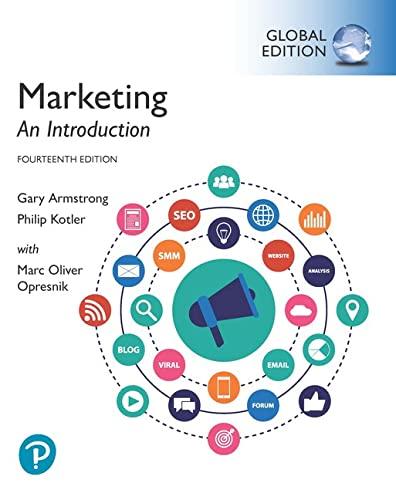Youve no doubt heard of 5-Hour Energythe small red bottles filled with an energy-infused elixir, located alongside
Question:
You’ve no doubt heard of 5-Hour Energy—the small red bottles filled with an energy-infused elixir, located alongside the candy and gum near the checkout at most grocery and convenience stores.
Chances are good that you’ve tried one. You may even be among the more than 4 million people in the United States who have collectively consumed 9 million bottles of 5-Hour Energy in just the past seven days. This upstart brand has had a huge impact on the beverage industry. How did 5-Hour Energy become so big so fast?
By targeting the right kinds of customers with a product that gives them exactly what they want at precisely the right moment.
It all started in the early 2000s. India-born Manoj Bhargava had sold his company—an outdoor furniture components maker—
and retired to Michigan with his wife and son. But after only a couple of months, he grew tired of doing nothing and began looking for a product he could license and turn into the “next big thing.” With that in mind, he attended a natural products trade show in Anaheim, California.
Amid meetings with numerous companies, he happened upon the booth for an energy drink developed by a group of PhDs. The 16-ounce concoction claimed to boost energy for hours. Knowing he faced meetings until 10 p.m. that evening, Bhargava was concerned that he not would be able to stay awake, let alone pay attention. So, he tried a can of the energy drink. The results were almost instantaneous. “For the next six or seven hours, I was in great shape,” Bhargava recalls. Not only was he wide awake, but his levels of focus and awareness were enhanced. “I thought, ‘Wow, this is amazing. I can sell this.’”
But when he talked with the drink’s owners to discuss potential partnerships, Bhargava learned that they were not interested in selling or even licensing the rights for the product. He looked over the label and made a mental note of its ingredients and thought, “How hard can it be?” Whereas most people with no science or nutrition background would never dream of trying to come up with their own recipe for a product intended for human consumption, Bhargava was not deterred. He got to work setting up his own lab and forming a company he called Living Essentials.
Bhargava quickly realized that a 16-ounce beverage would not succeed in a market saturated with long-standing brands peddled by deep-pocketed companies. As an energy-giving beverage, the new product would have to compete for refrigerator and shelf space with an ever-increasing batch of brands led by Red Bull. It would also face off against some of the most established brands in the world put out by the likes of the Coca-Cola and PepsiCo.
But Bhargava’s new concoction didn’t have to be a 16-ounce beverage or, for that matter, a beverage at all. “If I’m tired, am I also thirsty? Is that like having a headache and a stomachache,” mused Bhargava. After all, Tylenol didn’t sell a 16-ounce single serving version of its pain-killing product. As he developed the formula through trial and error—he always tried the experimental versions out on himself—he contemplated the customer he was trying to reach and how the product could be positioned to appeal to them.......................
Questions 1. Consider the variables commonly used to segment markets.
Which of these best represents how the makers of 5-Hour Energy segmented the market?
2. Which market targeting strategy is 5-Hour Energy following? Justify your answer.
3. Write a positioning statement for 5-Hour Energy.
4. What are the potential challenges 5-Hour Energy faces in the future?
Step by Step Answer:

Marketing An Introduction
ISBN: 9781292294865
14th Global Edition
Authors: Gary Armstrong, Philip Kotler, Marc Oliver Opresnik





